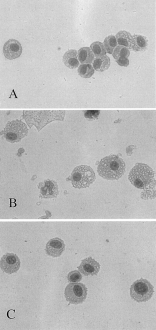Harvesting Alveolar Macrophages from the Mouse
3/15/2017
Chavez-Santoscoy AV, Huntimer LM, Ramer-Tait AE, Wannemuehler M, Narasimhan B: Harvesting murine alveolar macrophages and evaluating cellular activation induced by polyanhydride nanoparticles. Journal of visualized experiments : JoVE 2012(64):e3883.
Biodegradable nanoparticles have emerged as a versatile platform for the design and implementation of new intranasal vaccines against respiratory infectious diseases. Specifically, polyanhydride nanoparticles composed of the aliphatic sebacic acid (SA), the aromatic 1,6-bis (p-carboxyphenoxy) hexane (CPH), or the amphiphilic 1,8-bis(p-carboxyphenoxy)-3,6-dioxaoctane (CPTEG) display unique bulk and surface erosion kinetics 1,2 and can be exploited to slowly release functional biomolecules (e.g. protein antigens, immunoglobulins, etc.) in vivo. These nanoparticles also possess intrinsic adjuvant activity, making them an excellent choice for a vaccine delivery platform.
In order to elucidate the mechanisms governing the activation of innate immunity following intranasal mucosal vaccination, one must evaluate the molecular and cellular responses of the antigen presenting cells (APCs) responsible for initiating immune responses. Dendritic cells are the principal APCs found in conducting airways, while alveolar macrophages predominate in the lung parenchyma. AAM are highly efficient in clearing the lunges of microbial pathogens and cell debris. In addition, this cell type plays a valuable role in the transport of microbial antigens to the draining lymph nodes, which is an important first step in the initiation of an adaptive immune response. AM also express elevated levels of innate patter recognition and scavenger receptors, secrete pro-inflammatory mediators, and prime naive T cells. A relatively pure population of AM (e.g. greater than 80%) can easily be obtained via lung lavage for study in the laboratory. Resident AM harvested from immune competent animals provide a representative phenotype of the macrophages that will encounter the particle-based vaccine in vivo. Herein, we describe the protocols used to harvest and culture AM from mice and examine the activation phenotype of the macrophages following treatment with polyanhydride nanoparticles in vitro.

 Respiratory System
Respiratory System





